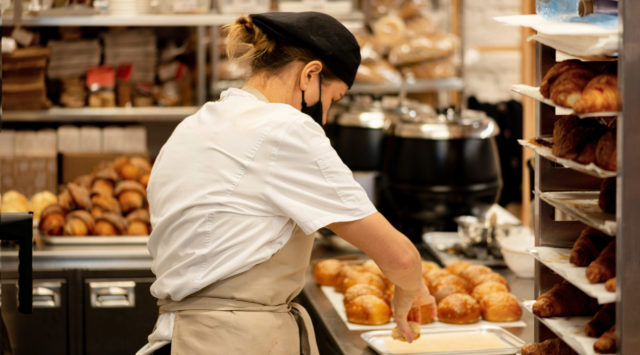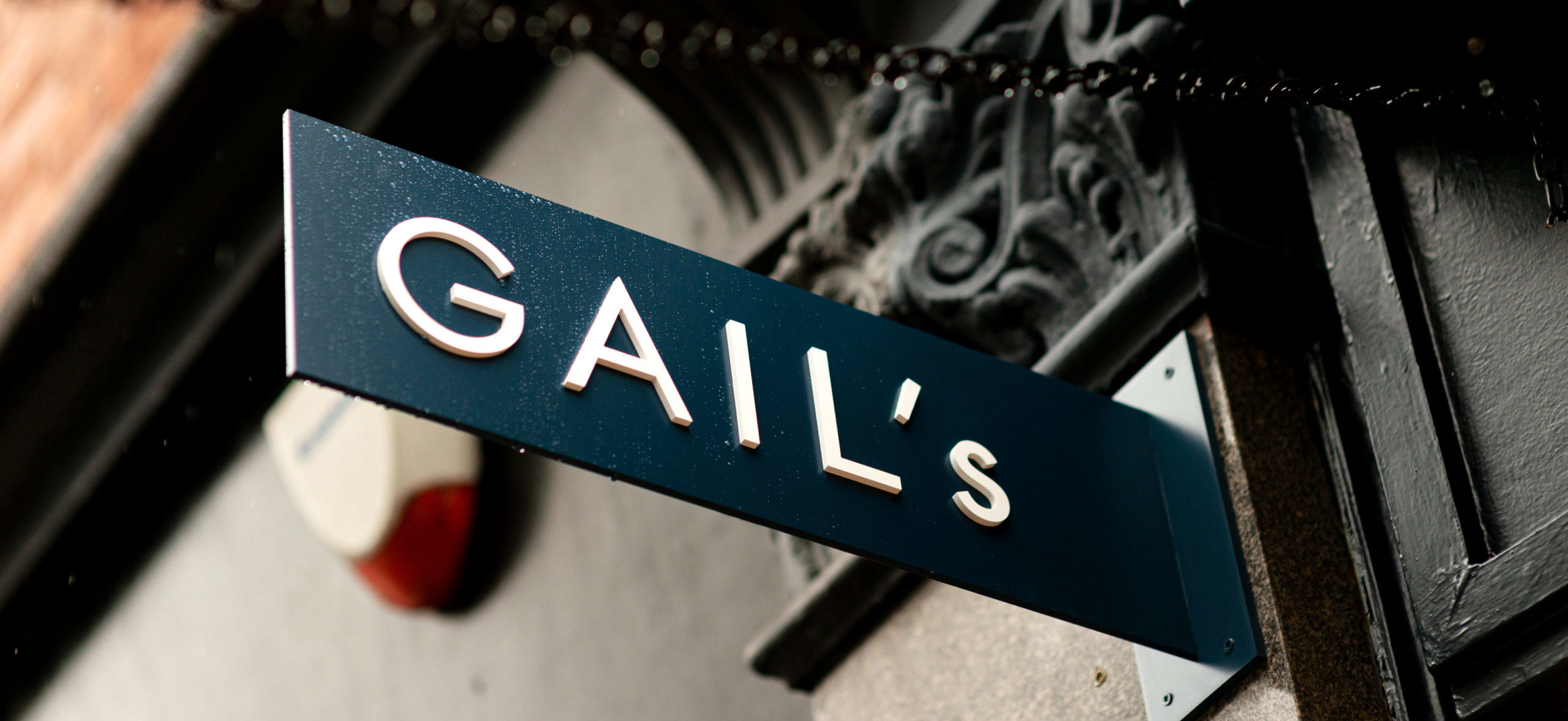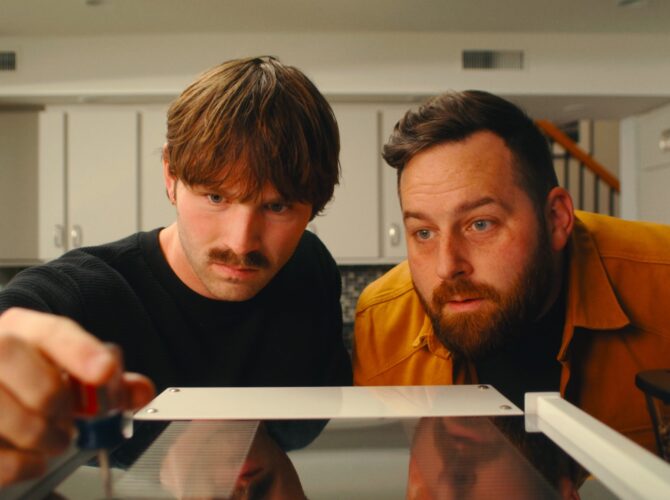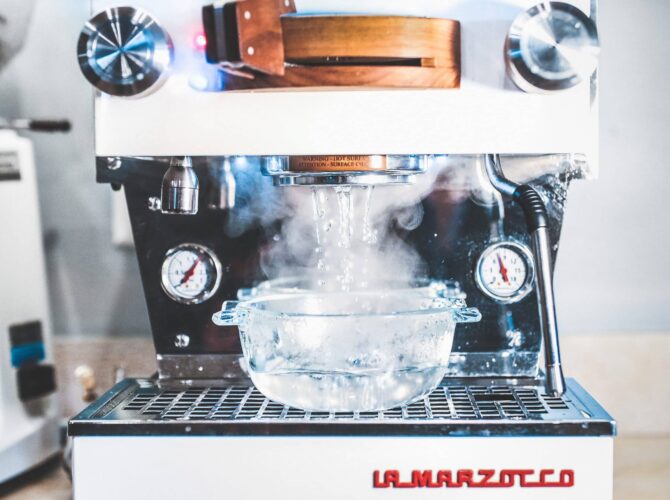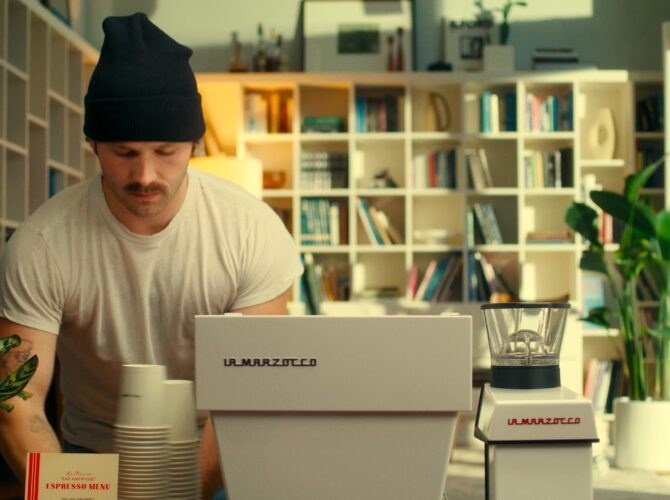GAIL’s Bakery have been using La Marzocco machines since they first opened in 2005, starting with our beloved GB5 which can still be found in many of their bakeries across the UK. With the launch of the GB5 S and GB5 X, we’ve been looking back at the elegant engineering and eye catching design of the original GB5 and GAIL’s Bakery seemed like the perfect place to start.
We spoke to Jessica Worden, Head of Coffee at GAIL’s, about her time working at GAIL’s, her memories of using the GB5 and how the GB5 has helped GAIL’s become the successful bakery that it is so well known for today.
You can watch the full interview here or you can read the interview below:
How was the company positioned in 2005 when the GB5 was released?
In 2005 we’d just opened for the first time, and I joined 5 years later in 2010. When I started with GAIL’s, we had seven bakeries and all of them had a GB5. At the time I believe the GB5 had the most cutting edge technology and the reason why GAIL’s chose to work with La Marzocco was because it was the mutual alignment of the two businesses with a focus on craftsmanship.
There was a real love of this synergy of how the GB5 had this real handcrafted aesthetic, with almost pre-retro and antique looking shapes, that harken back to the very origin of the barista and the advent of espresso based coffee.
So we really loved the classic shape, the lion details, the script emblazoned on the back; it was such, and still is, an iconic shape and we really loved how it was a real stamp on each and every bakery. Everyone knew when they walked into GAIL’s that we were committed to the craft of espresso making, even though we were a bakery that was 100% focused on making beautiful bread.
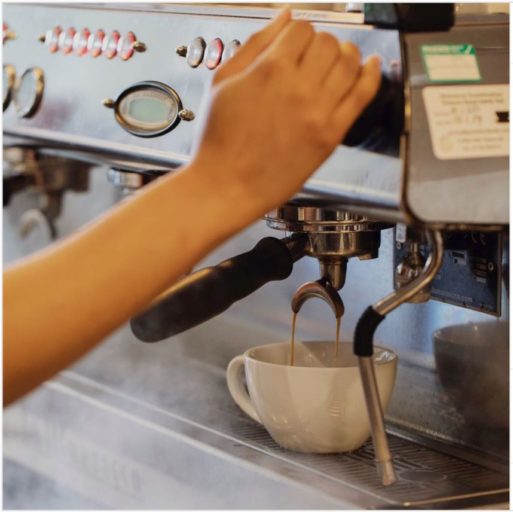
Prior to you joining in 2010, was there anyone within your role or did you come on board because coffee had begun to be bigger part of the operation of the company?
When GAIL’s started, we had different people who served in the role, it was really a dream of Tom Molnar in particular, our CEO and Co-Founder, along with Ron Avidon, to bring bakeries back to the High Street so they had started working with Gail Mejia .
Tom and Ron were keen to return bakeries to the High Street and so they has started a really successful wholesale business supporting Gail to move from Baker & Spice, a business she started, to producing wholesale artisan craft bread, which at that point really didn’t exist.
You see many places have now achieved it but if you look at the scale of what GAIL’s was starting to do then and what we’ve grown to now with bread holdings, it’s substantially different. Underpinning that vision to bake beautiful bread was also to create opportunities in the High Street for people to purchase it and so that’s how GAIL’s came about. It was this desire to have a bakery on the High Street, available to neighborhoods in and around London, and now further afield, where people can get a beautiful fresh loaf, lovely croissants and a beautiful cup of coffee
When I started at GAIL’s bakery in 2010, there wasn’t really even a barista role, there were just people who were really great at making coffee and I was one of them. As the business started to grow in the next year I started to have more and more opportunities to develop the people around me and what led on from that was more opportunities to formalize our training program. I worked with other people who were training in the business and slowly we shaped a training program that we’ve revised almost annually since then and then that went hand in hand with starting to shape the offer itself and making decisions about how we wanted to make coffee.
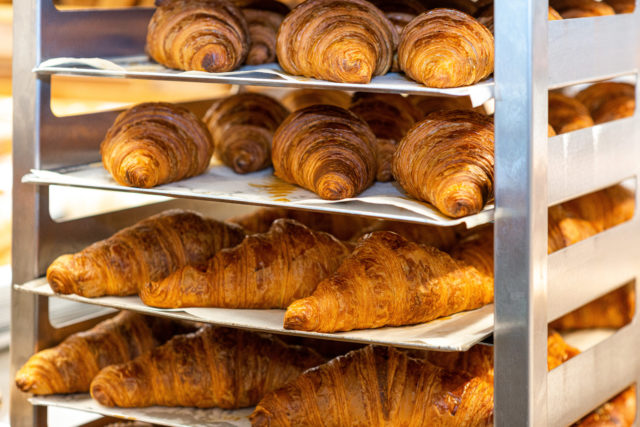
Would you say the demand for artisanal breads is closely aligned with the growth in demand for specialty coffee between 2005 – 2010?
We had such a clear vision on how we wanted to make beautiful bread but I think at the outset of GAIl’s that wasn’t, and actually never has been, the core focus. It’s only as the business grew that we understood that in order to achieve our business goal of being committed to craft and celebrating that and everything we do, we had to give more focus to coffee and that coincided with the rise of specialty coffee in London specifically, but also in the UK at large.
You definitely see that as people begin to appreciate beautifully crafted coffee that they’re also looking for that in whatever they’re consuming. So you start to see a rise in interest in lovely salads with interesting ingredients and really fresh local produce and baked goods, they combine so well with coffee so they’ve definitely gone hand in hand.
I remember when I was looking to move to the UK from Holland back in 2008, I was looking for artisan bakeries to work for. I had spent 6 years doing that in Holland before I started working in an espresso bar and I thought ‘Ok, let’s see what the UK’s doing’ and there was just so very little. My first year in the UK was working at Boston Tea Party; it was just a part time job, I was doing it next to my masters, and when I’d go to London I’d go to Monmouth and that was it. I know that there were other places but they were actually quite hard to find and so every time I went to Monmouth I was getting really great pastries from there and really lovely filter coffee and I think the marriage of those two things has grown as the specialty industry has grown.

How did the GB5 allow you to, not only formalise the training programme but also shape that coffee offer for the consumer?
I really love the GB5 as that’s the machine that I really got to know coffee on and I’ve worked on different machines over the years. We’ve introduced different innovations to our equipment range over the years to take advantage of what the industry has to offer, but the GB5 is just so straightforward. It’s hard to express how something that is so simple and steadfast is wonderful because the terms that surround it are often a bit demeaning because it is a workhorse. We have machines in the estate that are 8 years old. We’re continuing to refurb machines that continue to function really really well because the quality of its construction allows us to.
Also the GB5 is just really straightforward and I think all of the push buttons, initially when we were starting out as a business, allowed us to create different recipes which made it easier for people to use. As we started to grow as a business and invest more in our training programmes, we were then able to take the menu buttons and use them differently.
It’s very straightforward and easy to train people on a system like that. The manual nature of setting the flowmeters, all of that is just really easy to do, its really straightforward. When you’re dealing with such as fast growing business with such a diverse group of people who are operating the equipment who come to GAIL’s with very very diverse life experiences, having a really straightforward machine that’s easy for people to use that allows for complexity but in its interface is not highly complex, is perfect. People are super comfortable with the GB5.
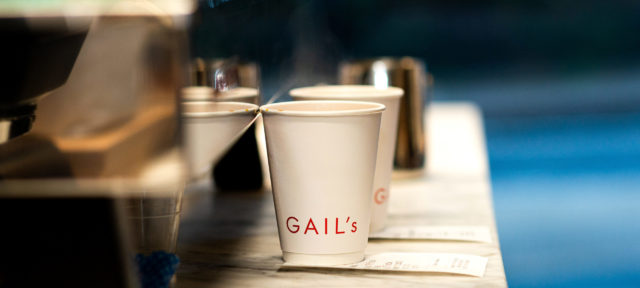
What were the key features of the GB5 that made it the machines of choice for GAIL’s?
I honestly think it was the design. There was something so iconic about the way that it looked that just says “this is a beautiful handcrafted espresso machine and you’re going to get beautiful handcrafted espresso from it”, that led us to stick with it for such a long time.
It just made sense. It looked right in our bakeries, which is not to say that the decision making was purely based on that it looked nice, but there was a real trust in the quality of the manufacturer. It really helped that La Marzocco, even when we started using it, had a fairly strong foothold in the UK market which meant it was widely understood and could be repaired by a very wide pool of engineers. But also with La Marzocco moving into the UK, opening their office, it just really cemented the long term sustainability of using the GB5 in our bakeries.
When you think of the GB5, what immediate feelings does it evoke for you?
The GB5 is just super nostalgic. Every time I try to steam on a different machine, it doesn’t matter the make, the manufacturer, it doesn’t feel the same. Maybe that has to do with really growing within my own craft as a barista, I’m just totally attached to that machine. I don’t need to have it in front of me to know exactly how it works. When I go up to GB5 to make a drink, it’s almost from memory. So it is very nostalgic but it’s almost very comfortable. I know that’s not the nicest word but it is, there’s a real ease of use that I’ve always really loved with the GB5.
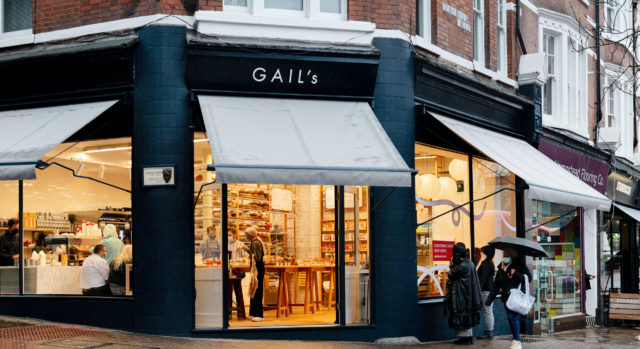
How has business changed in 15 years?
Over the past 15 years, GAIL’s has grown from a single bakery to 66 and we have more opening over the next few months.
What we’ve seen over the years is the demand for coffee; beautifully crafted coffee, whether that’s Espresso, Flat White, Latte, just continues to grow and that marriage of Croissants in the morning with a Flat White to-go is something we’re seeing an increase in interest.
Not just the demand for coffee but the quality of coffee that were able to create through the different changes and developments we’ve implemented over the past 15 years. We’ve supported that relationship to grow so over time a beautiful coffee has become cemented as part of our offer that many people associate our brand with. Although GAIL’s is very much a bakery focused on the craft of baking, and bringing that experience to neighbourhoods around London and further afield, at the same time a lot of people come to GAIL’s specifically for our coffee. They know the quality that they’re going to get and that quality is definitely embedded in the equipment that we invest in but also the way that we train our team to use it and the focus that we have on delivering quality in every cup. That quality can really only be delivered with that consistency that we achieve through reliable equipment. Equipment that’s easy to train our teams on, equipment that is beautifully crafted and has enough controllable factors that we know that if we buy beautiful coffee from our roastery partner, and we train our teams well and we invest a lot in the culture around the craft of coffee that with the right equipment, we can achieve that.
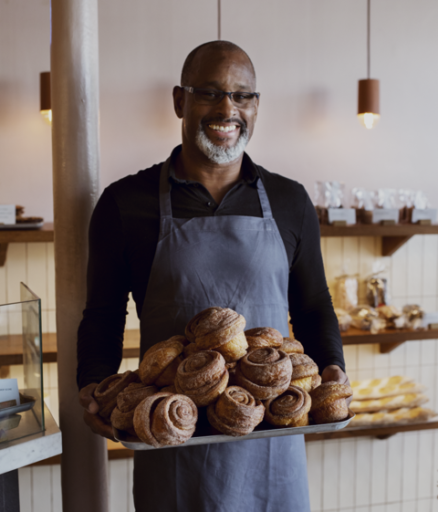
What you think could benefit future developments and versions of the GB5?
I think an automated steam wand would be great! But more seriously, I mean there are different things that have been issued with other models such as the Strada, I feel like that open layout offers some opportunities. With the GB5 specifically, I think what is lovely about it is the simplicity. So I would never advocate for too much change.
I feel that what’s lovely about it is that it’s really straightforward so small innovations to improve the ease of the working experience for baristas, like ‘straight-in‘ portafilters or maybe smarter systems around milk steaming. I think longer term what could be really beneficial would be an improvement in the reporting or communication of boiler function. I think those small things that are more focused on either the sustainability of the baristas working practices or the sustainability in the condition of the equipment itself is where most businesses would see the most significant benefit.
What do you think when we say “the future of hospitality and specialty coffee”?
I think the future of specialty is just equipment that facilitates the barista to shine. Everyone always asks me what’s the future of the barista and the reality is that for people, and you see it now more than ever, getting a cup of coffee is an occasion, it has an emotional resonance for people. In London it’s quite literally your opportunity to get out of the house when you go to a GAIL’s and you’re buying a loaf and it’s something to look forward to.
We see more than ever that coffee is important to people and has a really significant meaning and that meaning is imparted by the barista. The barista is the representative of producers at origin, of the roasters who invest so much time and training in getting things exactly right. They’re the ones who use equipment and if they don’t use it well then everything suffers so at the very heart of coffee, is the barista.
When I look at the future of coffee I see equipment, innovation, education. Supporting the barista to do their job better and more sustainably and as well-equipped as possible, to provide an amazing customer experience because ultimately that is what coffee is. It’s the flavour of what you’re tasting, it’s the texture of the steamed milk, but all of those things are held together by the barista. The future of coffee is held within the people who everyday are making these beverages so in terms of equipment, it has to underpin that.
